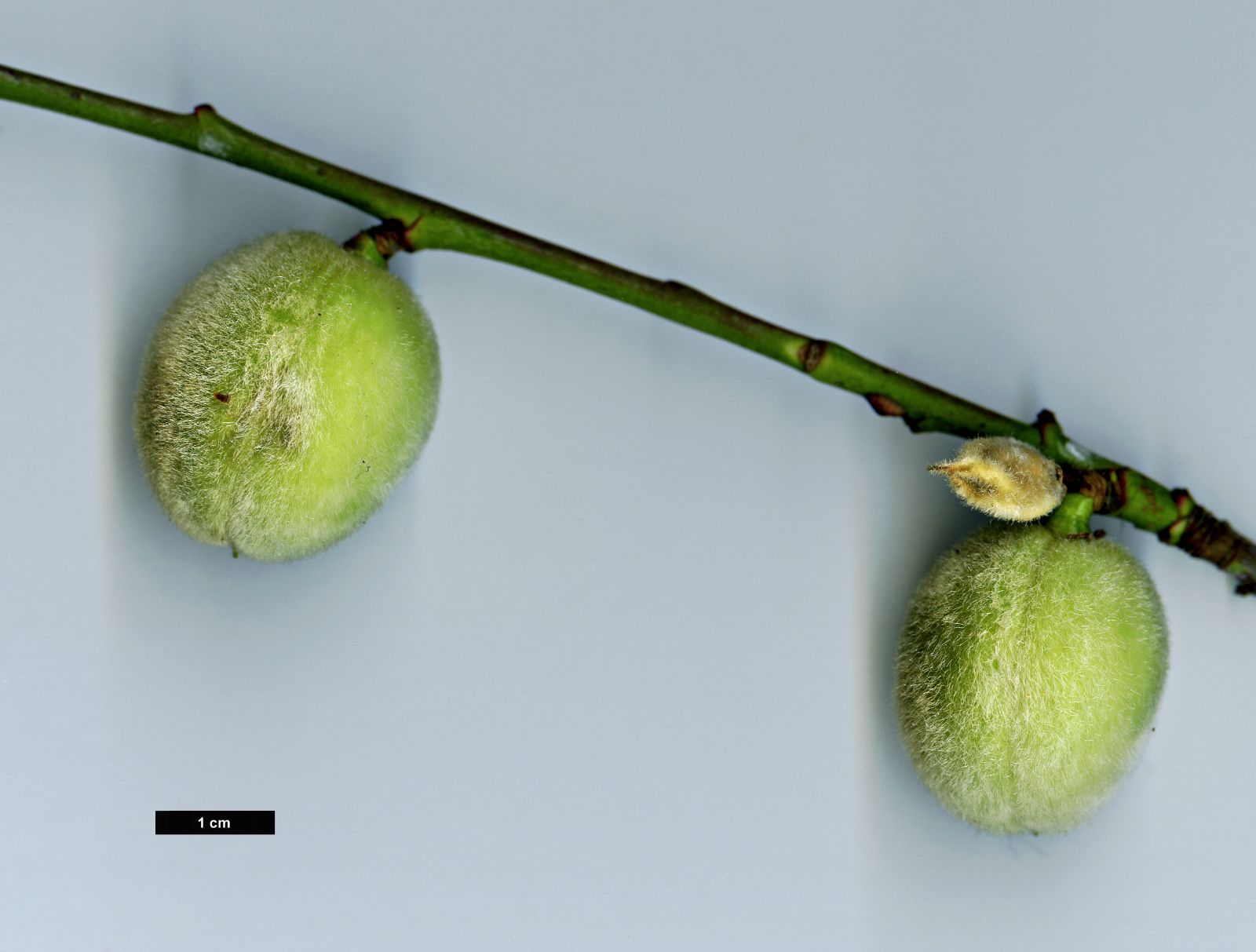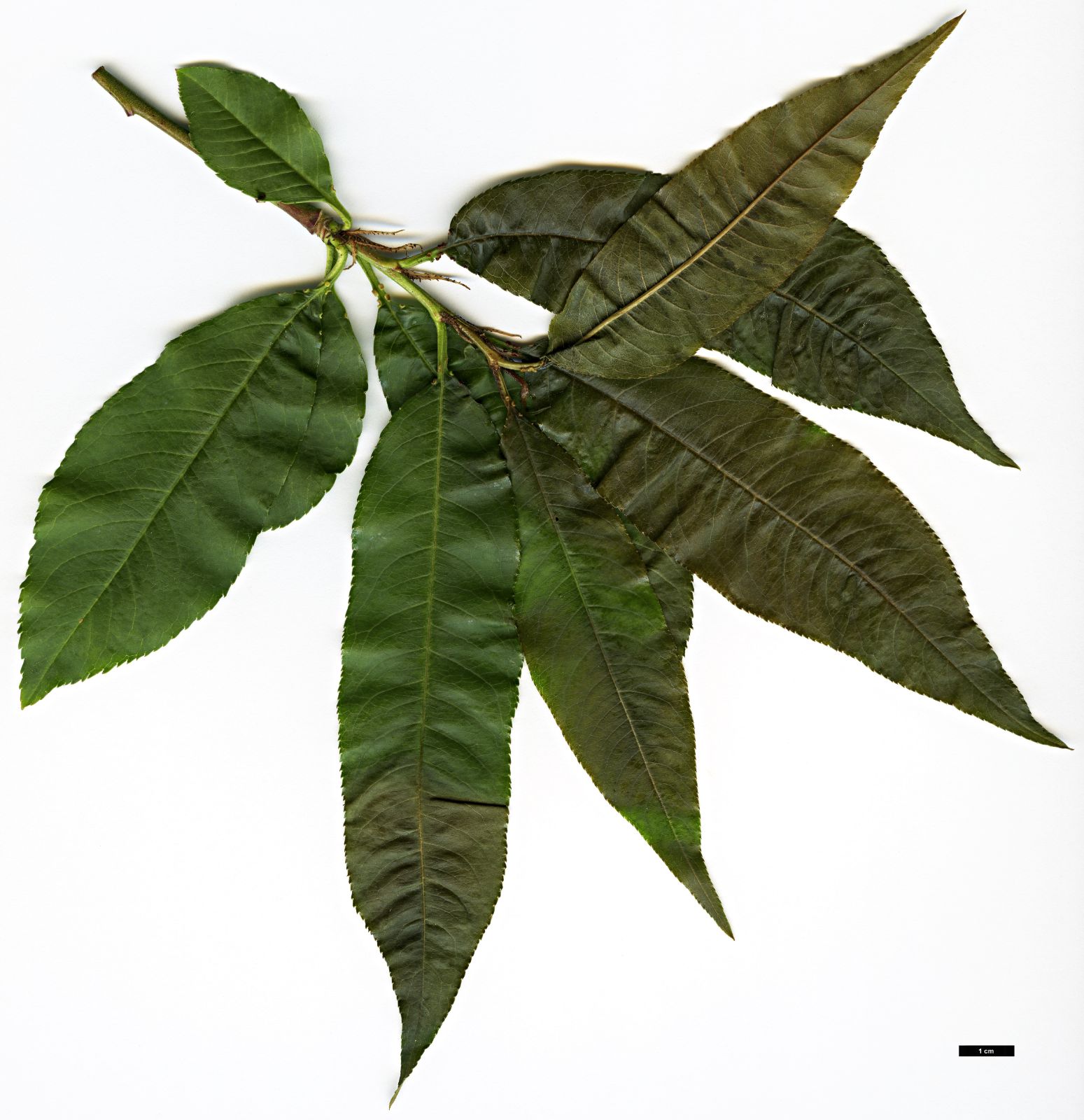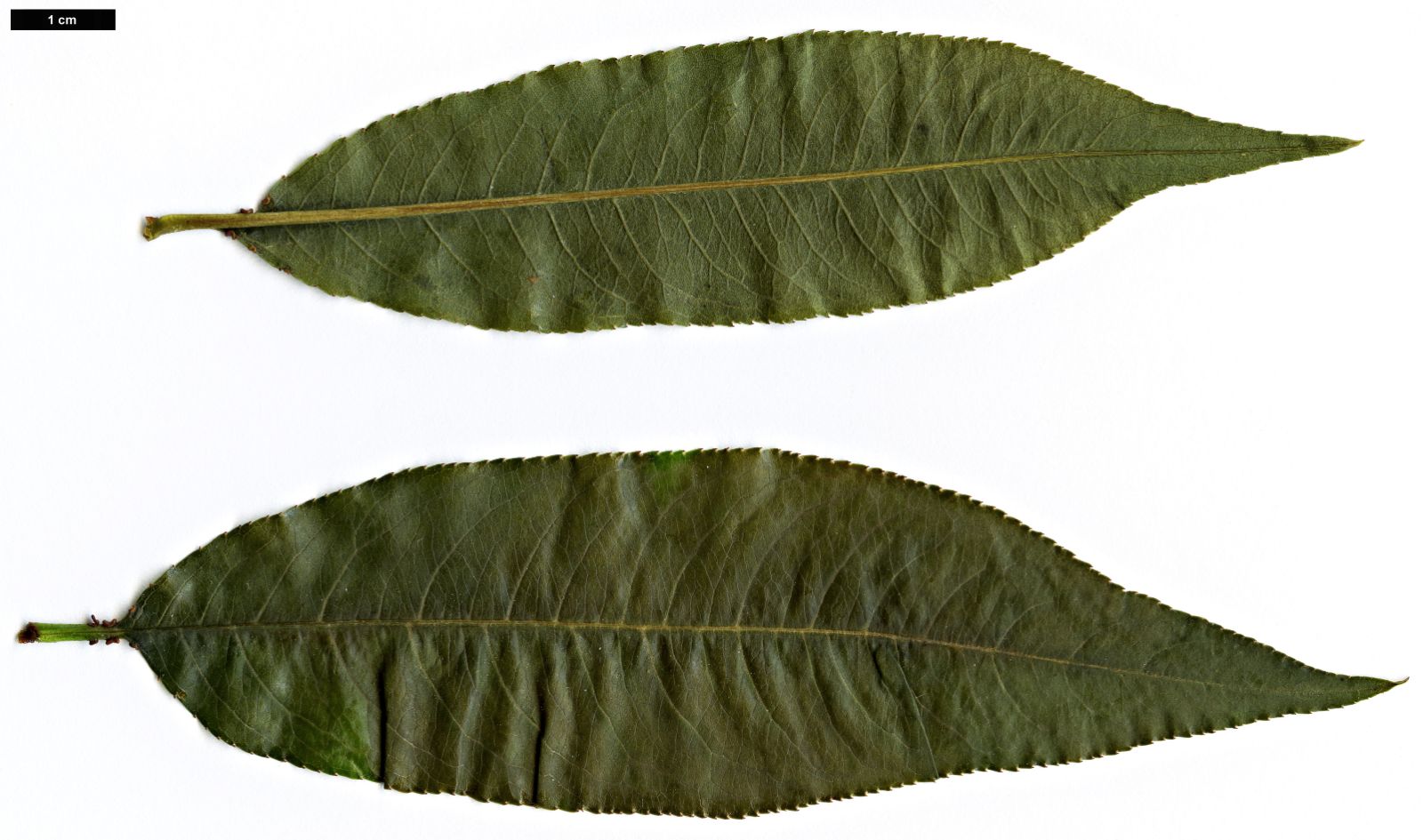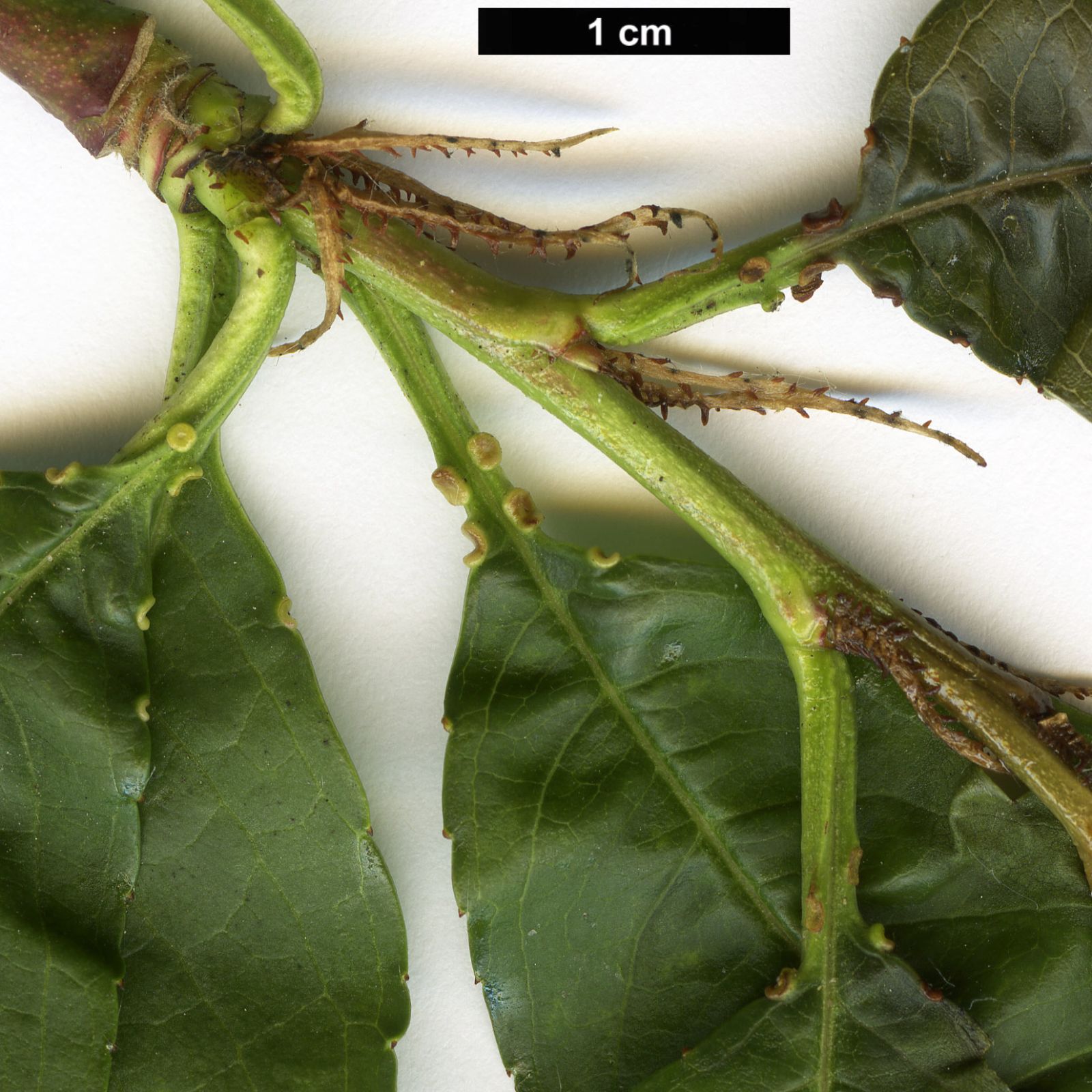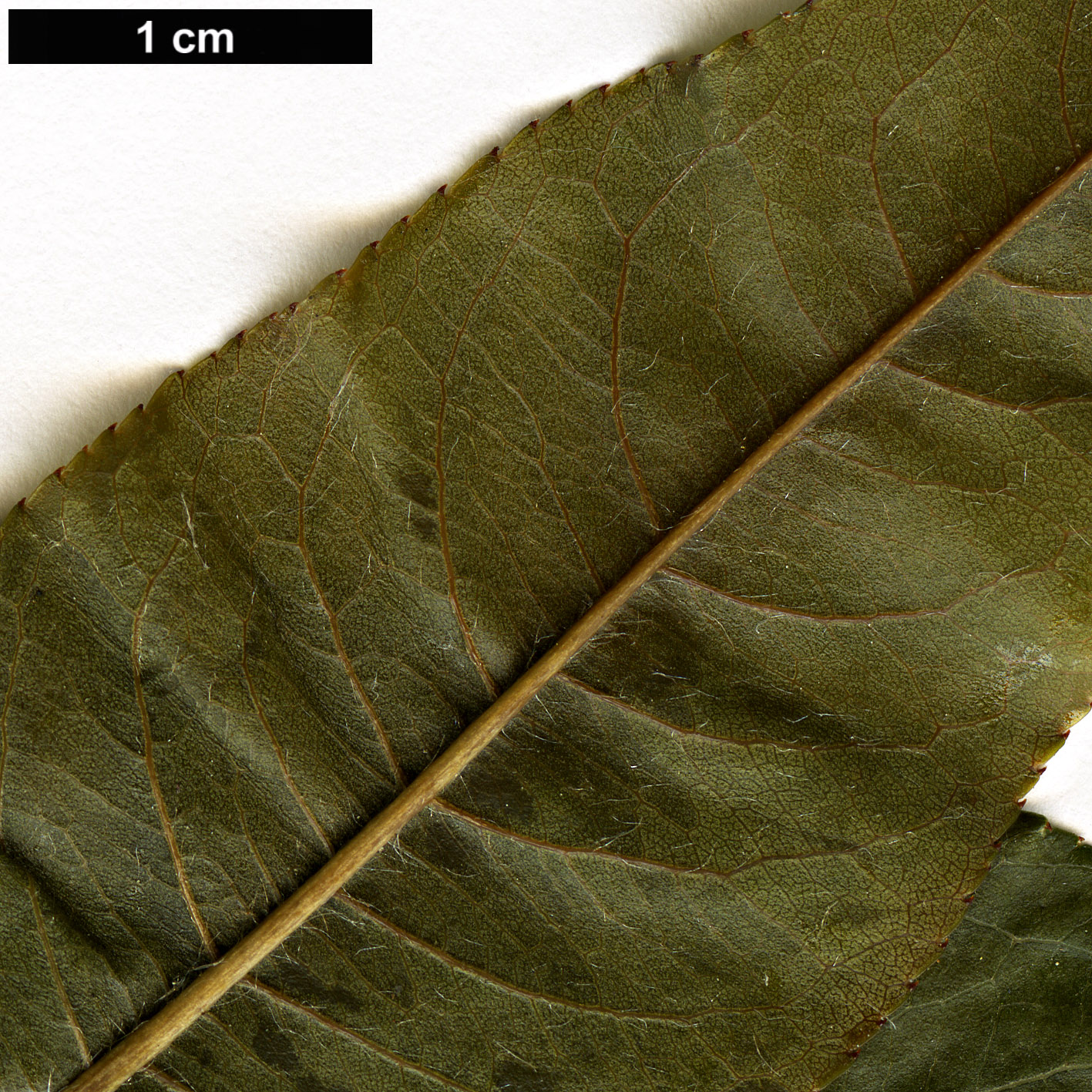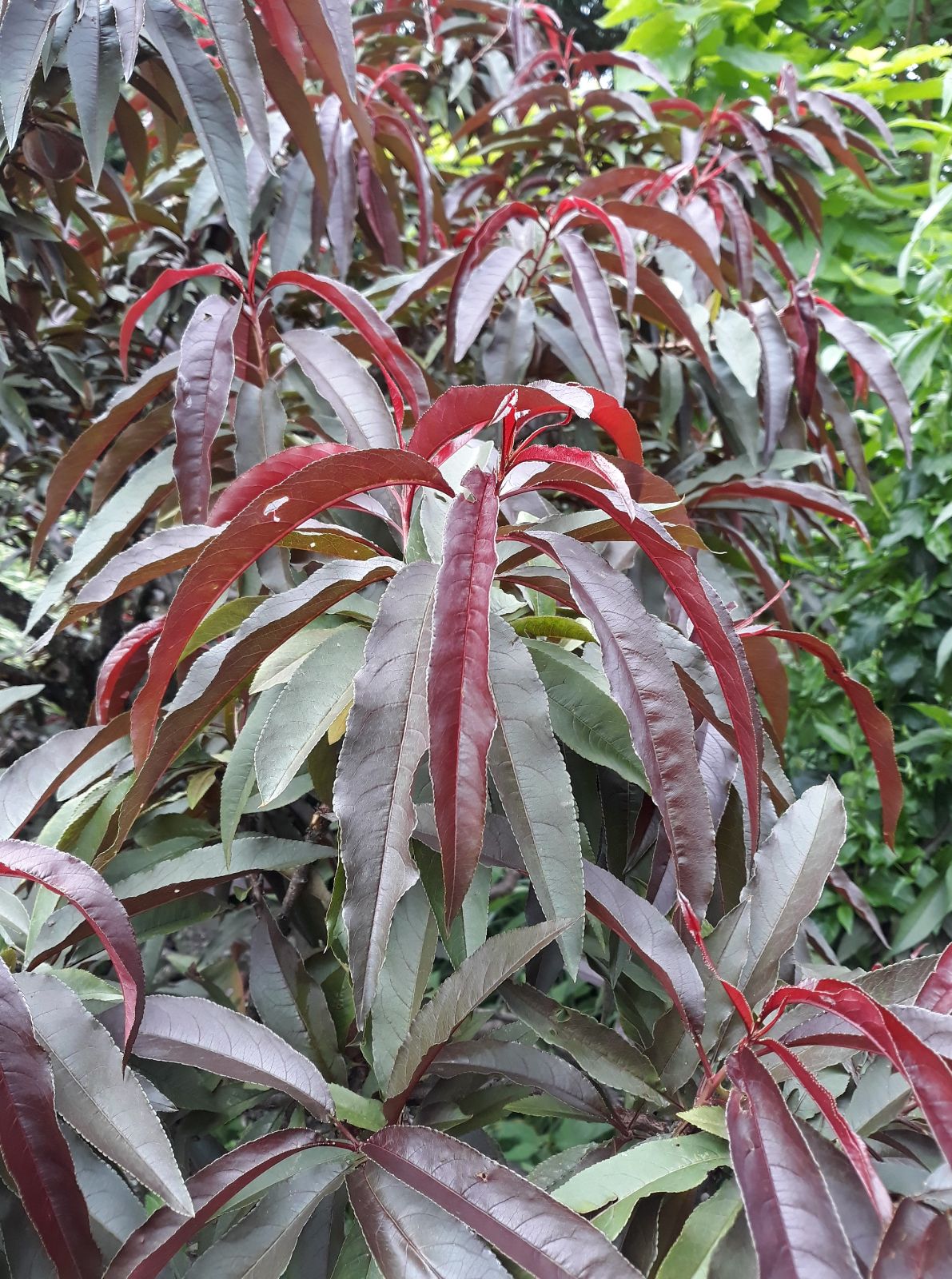Prunus persica
Credits
Article from Bean's Trees and Shrubs Hardy in the British Isles
Recommended citation
'Prunus persica' from the website Trees and Shrubs Online (treesandshrubsonline.
Infraspecifics
Other taxa in genus
- Prunus alleghaniensis
- Prunus americana
- Prunus × amygdalo-persica
- Prunus amygdalus
- Prunus angustifolia
- Prunus apetala
- Prunus arabica
- Prunus argentea
- Prunus armeniaca
- Prunus avium
- Prunus besseyi
- Prunus brigantina
- Prunus campanulata
- Prunus canescens
- Prunus cantabrigiensis
- Prunus cerasifera
- Prunus cerasus
- Prunus cocomilia
- Prunus concinna
- Prunus conradinae
- Prunus consociiflora
- Prunus cornuta
- Prunus cuthbertii
- Prunus dasycarpa
- Prunus davidiana
- Prunus × dawyckensis
- Prunus dielsiana
- Prunus domestica
- Prunus dulcis
- Prunus emarginata
- Prunus × fontanesiana
- Prunus fruticosa
- Prunus glandulosa
- Prunus grayana
- Prunus himalaica
- Prunus hortulana
- Prunus humilis
- Prunus ilicifolia
- Prunus incana
- Prunus incisa
- Prunus jacquemontii
- Prunus kansuensis
- Prunus lannesiana
- Prunus laurocerasus
- Prunus litigiosa
- Prunus lusitanica
- Prunus maackii
- Prunus mahaleb
- Prunus maritima
- Prunus maximowiczii
- Prunus microcarpa
- Prunus mira
- Prunus mugus
- Prunus mume
- Prunus nigra
- Prunus nipponica
- Prunus orthosepala
- Prunus padus
- Prunus pensylvanica
- Prunus pilosiuscula
- Prunus prostrata
- Prunus pumila
- Prunus rufa
- Prunus salicina
- Prunus sargentii
- Prunus serotina
- Prunus serrula
- Prunus serrulata
- Prunus sibirica
- Prunus × sieboldii
- Prunus simonii
- Prunus sogdiana
- Prunus speciosa
- Prunus spinosa
- Prunus ssiori
- Prunus subcordata
- Prunus subhirtella
- Prunus takesimensis
- Prunus tangutica
- Prunus tenella
- Prunus tomentosa
- Prunus triloba
- Prunus virginiana
- Prunus × yedoensis
A deciduous tree 20 ft high, of bushy habit; branchlets glabrous. Leaves lanceolate, 3 to 6 in. long, 3⁄4 to 11⁄2 in. wide; long-pointed, finely toothed, glabrous, stalk glandular, 1⁄2 in. long. Flowers usually solitary, sometimes in pairs, produced in early April from the buds of the previous season’s growth, pale rose, 1 to 11⁄2 in. across, with stalks scarcely longer than the bud-scales. Fruits fleshy, globose, clothed with velvety down, 2 to 3 in. across, yellowish suffused with red on the sunny side, enclosing a grooved stone.
The peach is one of those fruits which have been cultivated for so long, and over so wide an area, that its place of origin is doubtful. It is generally believed to be a native of China; it was certainly cultivated there hundreds, doubtless thousands, of years before it was known in W. Europe.
Closely allied to the almond, but less robust, it differs chiefly in its fleshy, juicy fruit with a wrinkled stone; also in the thinner, shorter-stalked leaves, smaller flowers, and in flowering two or three weeks later. The flowering peaches are some of the loveliest of all trees, especially the double red varieties. They are usually propagated by budding on plum stocks, but trees so raised rarely attain to great age. Quite possibly the peach is not in any case a long-lived tree, but worked on the plum it is very subject to canker and premature decay, owing to an imperfect adaptation of stock to scion. Yet it is difficult to suggest a better. On its own roots the peach succeeds in the south, but is too tender for the colder localities, and the fine double and richly coloured varieties now so popular can only be conveniently propagated by budding or grafting. Of varieties grown for fruit there are many, but with them we are not here concerned. The following, with the exception of f. compressa and var. nectarina, are ‘flowering’ peaches; the double-flowered ones often bear fruit:
'Alba'
Flowers white.'Alba Plena'
Flowers white, double. F.C.C. 1899, when shown by William Paul.'Aurora'
Flowers semi-double, Fuchsine Pink, petals frilled. Figured in Journ. R.H.S., Vol. 76, fig. 74. A.M. April 4, 1950. Said to be more vigorous than ‘Klara Mayer’, with flowers of a clearer pink.cv. ‘Clara Meyer’. See ‘Klara Mayer’.'Crimson Bonfire'
A very ornamental dwarf cultivar with richly pigmented leaves.
f. compressa (Loud.) Rehd
Remarkable for the flattened or compressed fruits. This was known in gardens early in the last century, and after being lost to cultivation was reintroduced from China in 1906. It is figured in Loudon, Arb. et Frut. Brit., Vol. 2, p. 680. It is known as the flat peach.'Foliis Rubris'
Leaves reddish purple when young, becoming bronzy green. Fruits purplish. A.M. 1939.'Helen Borchers'
Flowers Rose Bengal, semi-double. Raised by W. B. Clarke of San José, California. A.M. 1949.'Iceberg'
Flowers white, semi-double. Raised by Clarke, see above. A.M. April 4, 1950.'Klara Mayer'
Flowers clear pink, fully double. Put into commerce by Späth’s nurseries at the end of the last century, and still one of the best varieties. A.G.M. 1939. Gerd Krässmann, the German authority, has pointed out that the common spelling ‘Clara Meyer’ is incorrect.'Magnifica'
Flowers crimson, double, up to 1{3/4} in. across; habit rather spreading and lax. F.C.C. to Messrs J. Veitch 1894.'Palace Peach'
Flowers dark crimson, semi-double, about 1 in. wide. A.M. March 26, 1946.'Russell's Red'
Flowers large, semi-double, bright Carmine Red. Raised by Messrs L. R. Russell. A.M. February 21, 1933.var. nectarina (Ait.) Maxim.
Synonyms
Amygdalus persica var. nectarina Ait.
Persica laevis DC

